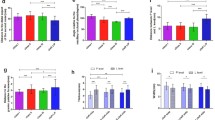Abstract
Aim
The aim of this study was to evaluate the maxillary anatomy in patients with cleft maxillary hypoplasia using computed tomogram.
Materials and Methods
A cross-sectional observational study was carried out in all cleft patients reporting to our department for the correction of secondary cleft deformities. A preoperative computed tomogram of the midface (from the superior orbital rim to the maxillary occlusal plane) was recorded to assess the parameters which evaluate the maxillary and pterygomaxillary anatomy in cleft maxillary hypoplasia patients.
Results
A total of 18 adult patients (female—5; male—13) were included in the study, which includes 15 unilateral and 3 bilateral cleft lip and palate patients. All the patients had undergone palatoplasty in their early childhood. Evaluation of the circum maxillary and pterygo-maxillary anatomy on the computed tomogram revealed that the average width of maxillary tuberosity was (mean—6.91 mm on cleft side, 4.51 mm on noncleft side); distance between medial and lateral pterygoid plates was (mean—6.45 mm on cleft side, 5.94 mm on noncleft side); distance from greater palatine foramen to posterior palatal border was (mean—5.6 mm on cleft side, 6.1 mm on noncleft side); distance from greater palatine foramen to pterygoid process was (mean—4.83 mm on cleft side, 5.6 mm on noncleft side); distance from pyriform rim to greater palatine foramen was (mean—30.0 mm on cleft side, 31.8 mm on noncleft side); inter pterygoid distance between medial pterygoid plates at the level of pterygoidhamulus was (mean—3.3 cms = 33 mm); inter pterygoid distance between medial pterygoid plates at skull base was (mean—3.0 = 30 mm)
Conclusion
Maxillary hypoplasia in adult cleft patients distorts the circum maxillary and pterygomaxillary anatomy with cleft side being more hypoplastic compared to the noncleft side which needs to be evaluated prior to planning maxillary advancement.







Similar content being viewed by others
References
Campbell A, Costello BJ, Ruiz RL (2010) Cleft lip and palate surgery: an update of clinical outcomes for primary repair. Oral and Maxillofac Surg Clin 22(1):43–58
Schönmeyr B, Sadhu P (2014) A review of the tensor veli palatine function and its relevance to palatoplasty. J Plast Surg Hand Surg 48(1):5–9
Lee SH, Lee SH, Mori Y, Minami K, Park HS, Kwon TG (2011) Evaluation of pterygomaxillary anatomy using computed tomography: are there any structural variations in cleft patients? J Oral Maxillofac Surg 69(10):2644–2649
Apinhasmit W, Chompoopong S, Methathrathip D, Sangvichien S, Karuwanarint S (2005) Clinical anatomy of the posterior maxilla pertaining to Le Fort I osteotomy in Thais. Clin Anat Off J Am Assoc Clin Anat Br Assoc Clin Anat 18(5):323–329
Cheung LK, Fung SC, Li T, Samman N (1998) Posterior maxillary anatomy: implications for Le Fort I osteotomy. Int J Oral Maxillofac Surg 27(5):346–351
Enlow DH, Bang S (1965) Growth and remodeling of the human maxilla. Am J Orthod Dentofac Orthop 51(6):446–464
Nicolau PJ (1983) The orbicularis oris muscle: a functional approach to its repair in the cleft lip. Br J Plast Surg 36(2):141–153
Cheng N, Zhang K, Song R (2000) Applied anatomy of arterial supply for the soft palate. Chin J Plast Surg 16(4):208–211
O’Regan B, Bharadwaj G (2007) Prospective study of the incidence of serious posterior maxillary haemorrhage during a tuberosity osteotomy in low level Le Fort I operations. Br J Oral Maxillofac Surg 45(7):538–542
Dadwal H, Shanmugasundaram S, Raja VK (2015) Preoperative and postoperative CT scan assessment of pterygomaxillary junction in patients undergoing Le Fort I osteotomy: comparison of pterygomaxillarydysjunction technique and Trimble technique—a pilot study. J Maxillofac Oral Surg 14(3):713–719
Newhouse RF, Schow SR, Kraut RA, Price JC (1982) Life-threatening hemorrhage from a Le Fort I osteotomy. J Oral Maxillofac Surg 40(2):117–119
Author information
Authors and Affiliations
Corresponding author
Additional information
Publisher's Note
Springer Nature remains neutral with regard to jurisdictional claims in published maps and institutional affiliations.
Rights and permissions
About this article
Cite this article
Kandaswamy, S.s., Somasundaram, S., Pendem, S. et al. Aberrations in Maxillary Anatomy of Adult Patients with Cleft Maxillary Hypoplasia: A Computed Tomographic Study. J. Maxillofac. Oral Surg. 21, 240–246 (2022). https://doi.org/10.1007/s12663-020-01405-z
Received:
Accepted:
Published:
Issue Date:
DOI: https://doi.org/10.1007/s12663-020-01405-z




